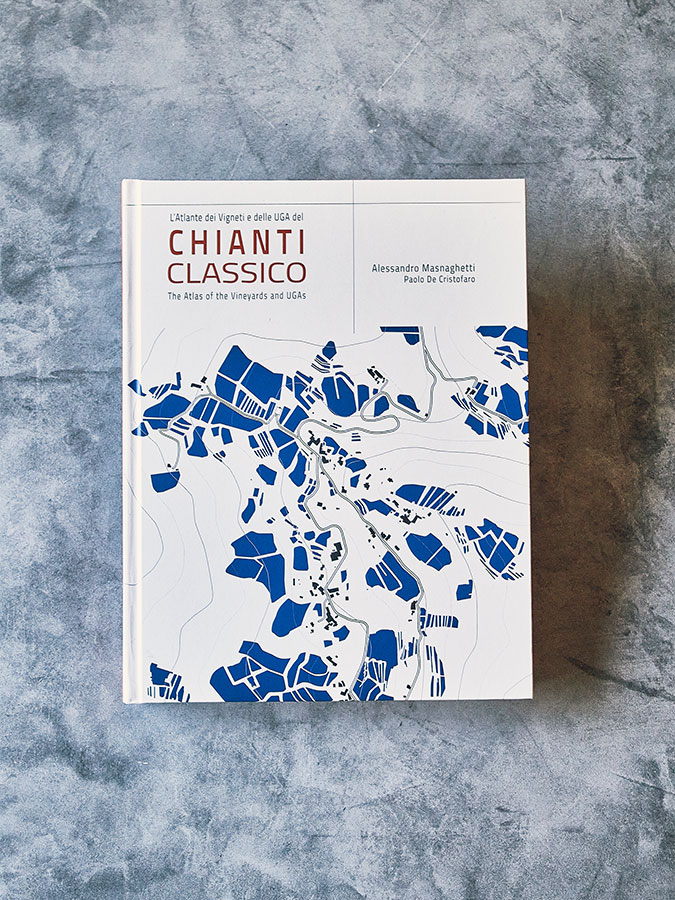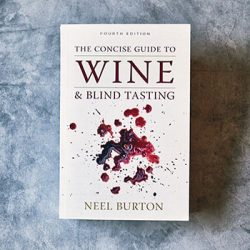

Chianti Classico: An Atlas earns a place on the bookshelf of every serious Italian wine lover alongside Alessandro Masnaghetti’s volumes on Barolo and Barbaresco. Masnaghetti’s latest book is an instant classic, delving into Chianti Classico with unparalleled depth and detail while elevating the region to the level of attention and status that it deserves. Readers familiar with Masnaghetti’s work will recognize some of the same tools in this book, and will appreciate significant new approaches dictated by regional differences.
Chianti Classico: The Atlas includes more than 150 maps, starting with the big picture and then drilling down into the communes and the UGAs (Unità Geografiche Aggiuntive, or additional geographic units). Masnaghetti provides multiple views of each area, showing elevation differences, soil types and average temperatures. In a welcome change from the format of his previous atlases, all of the maps in Chianti Classico share the same orientation, with north toward the top of the page, making it much easier for the reader to maintain a sense of direction.
Once into the sections on Chianti Classico’s eleven UGAs, Masnaghetti goes beyond the work of the Chianti Classico Consorzio and divides the communes into smaller subsections to provide greater detail and illuminate differences within the UGAs. This is extremely helpful, and no small task. UGAs and MGAs (Menzioni Geografiche Aggiuntive, the term used in Barolo) are basically the same thing—an officially delimited area within an appellation. The Barolo DOCG includes eleven communes and 170 separate MGAs. The recent adoption of UGAs by the Chianti Classico Consorzio recognized only eleven UGAs, in an area that is more than twice the size of Barolo. As Masnaghetti points out, unlike in Barolo, there is no tradition of recognizing smaller “cru” sites in Chianti Classico. By dividing Chianti Classico’s UGAs into smaller subsections for the purpose of discussion and dissection, he is breaking new ground and advancing our understanding (and, perhaps, that of Chianti Classico’s producers) of this varied territory. Masnaghetti is careful, though, to state that his editorial decisions about subdivisions are not intended to suggest boundaries for the creation of future UGAs.
Masnaghetti is a master at communicating complex information in succinct visuals, like the table on page 15 that shows the evolution of Chianti Classico’s wine laws since 1967, tracking the allowed amounts of sangiovese against white varieties and international varieties. A vintage chart encapsulates the style and character of each harvest going back to 1967. In a small table that may be more immediately useful for sommeliers than anything else in the book, he contrasts the wine styles of each UGA based on color, fruit, acidity and structure. More whimsically, for the many wine enthusiasts who are also avid cyclists, he includes an appendix with seven of the most scenic routes through Chianti Classico, complete with distance, elevation gain, road grade, degree of difficulty and tips on periods of heavy traffic. Let Strava try to compete with that.
Masnaghetti manages to sprinkle in some wry humor amongst the technical details, as the book is packed with text and it can get quite dense, particularly in the descriptions of Chianti Classico’s many different soil types. But this is meant as a reference work, and its immense depth and detail will keep readers returning to it on a regular basis.
A no-brainer holiday gift for any wine student or Italian wine lover on your list, Chianti Classico: An Atlas is available for purchase through the Rare WineCompany.
Chianti Classico: The Atlas of the Vineyards and UGs, by Alessandro Masnaghetti and Paolo de Cristofaro; English translation by Burton Anderson (©2022 Enogea, 463 pages)
is the Italian wine editor at Wine & Spirits magazine.
This story appears in the print issue of Winter 2022.
Like what you read? Subscribe today.



















